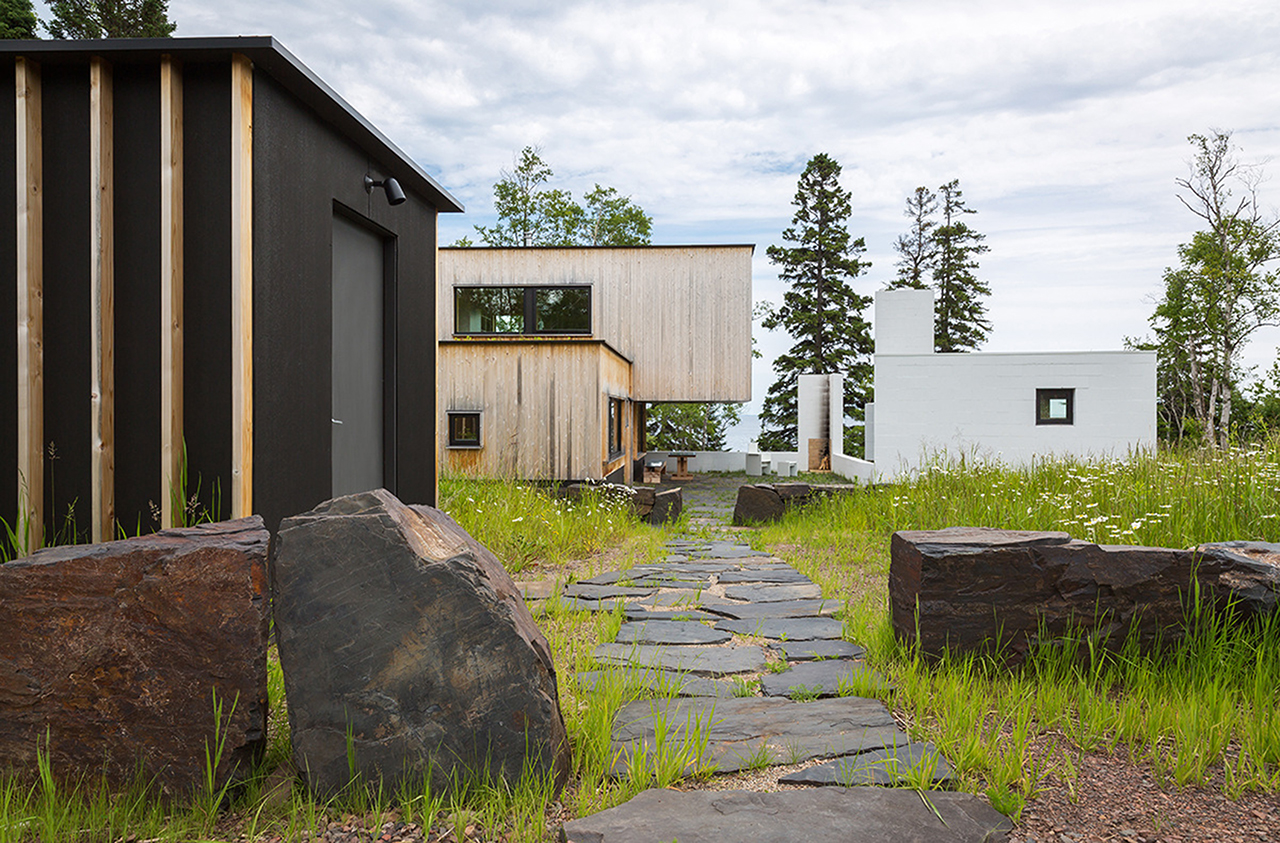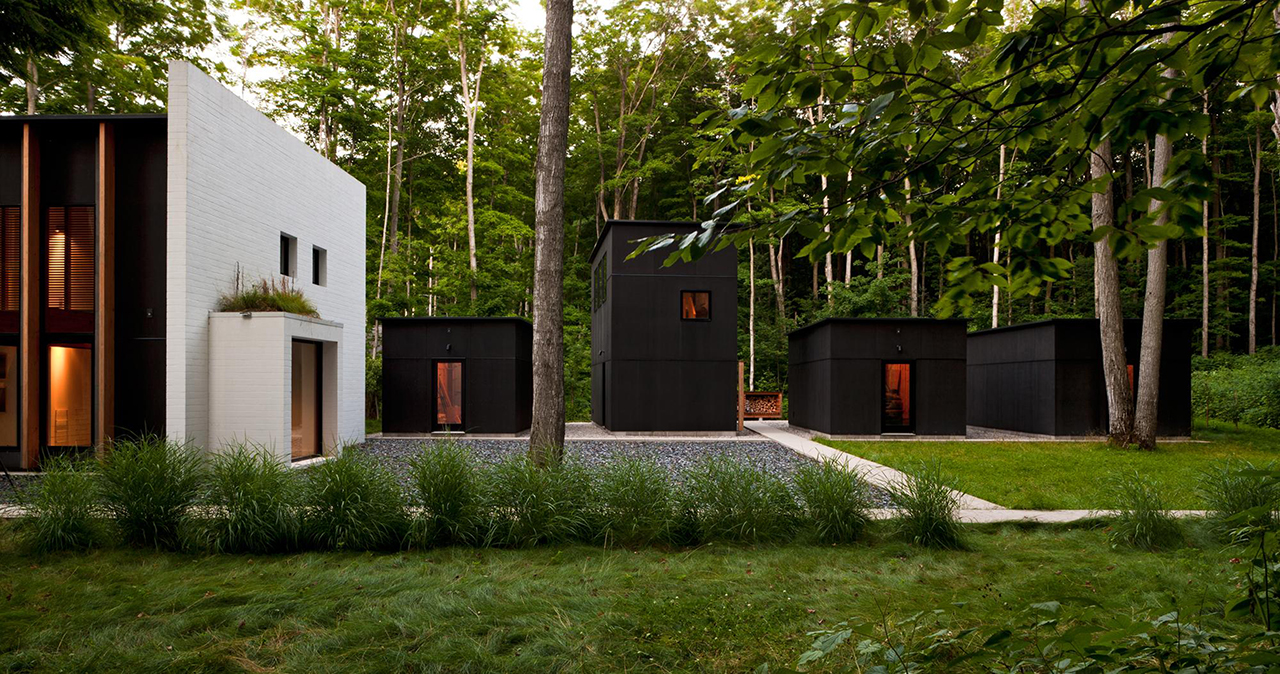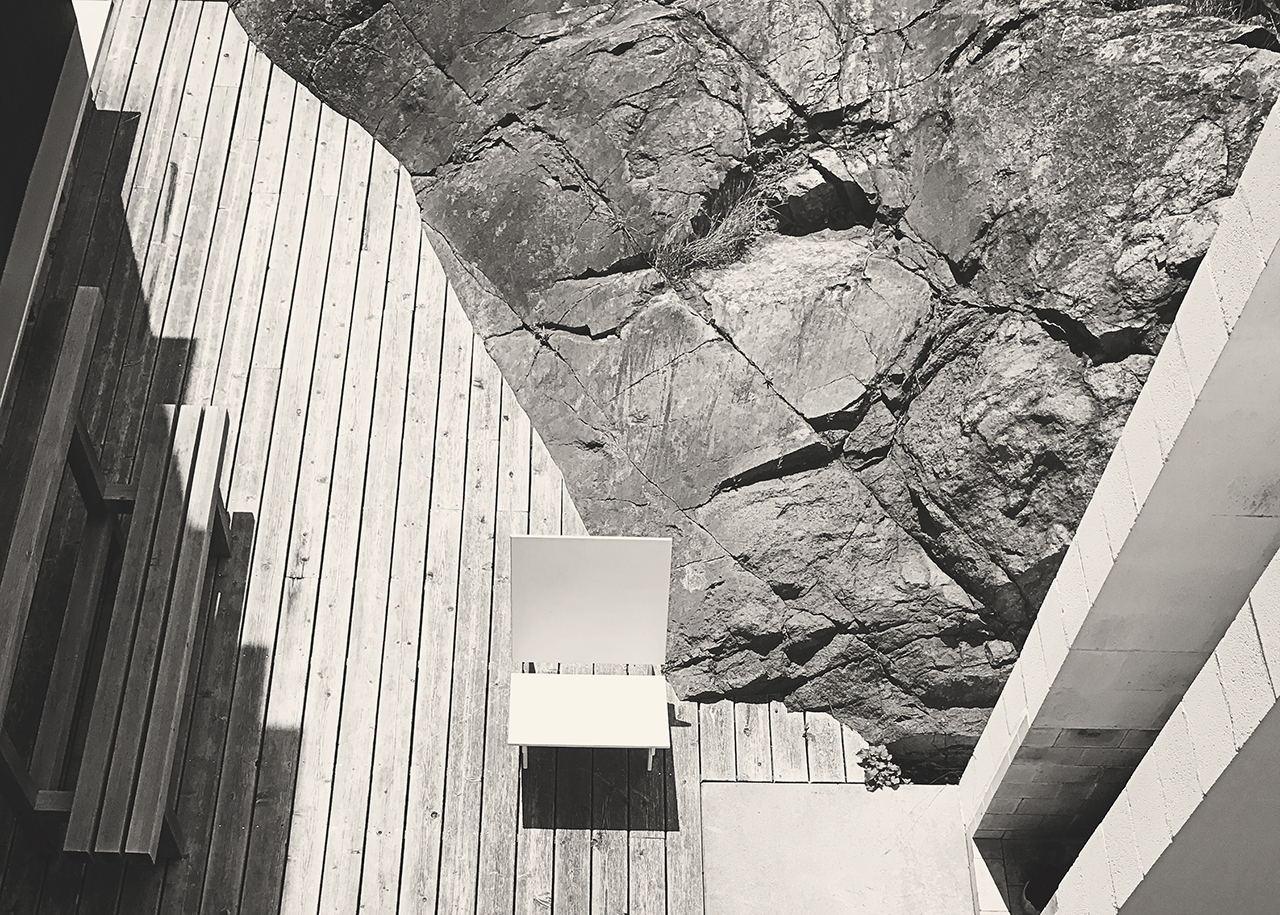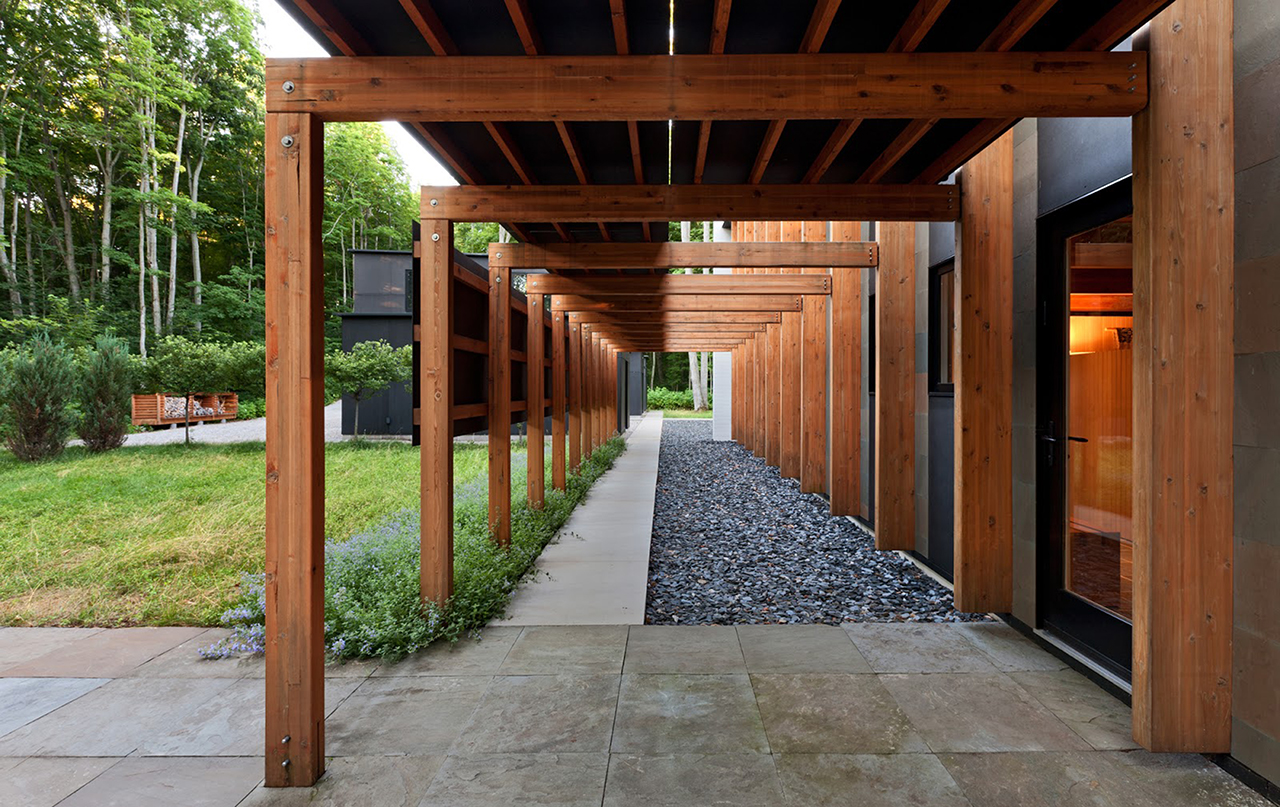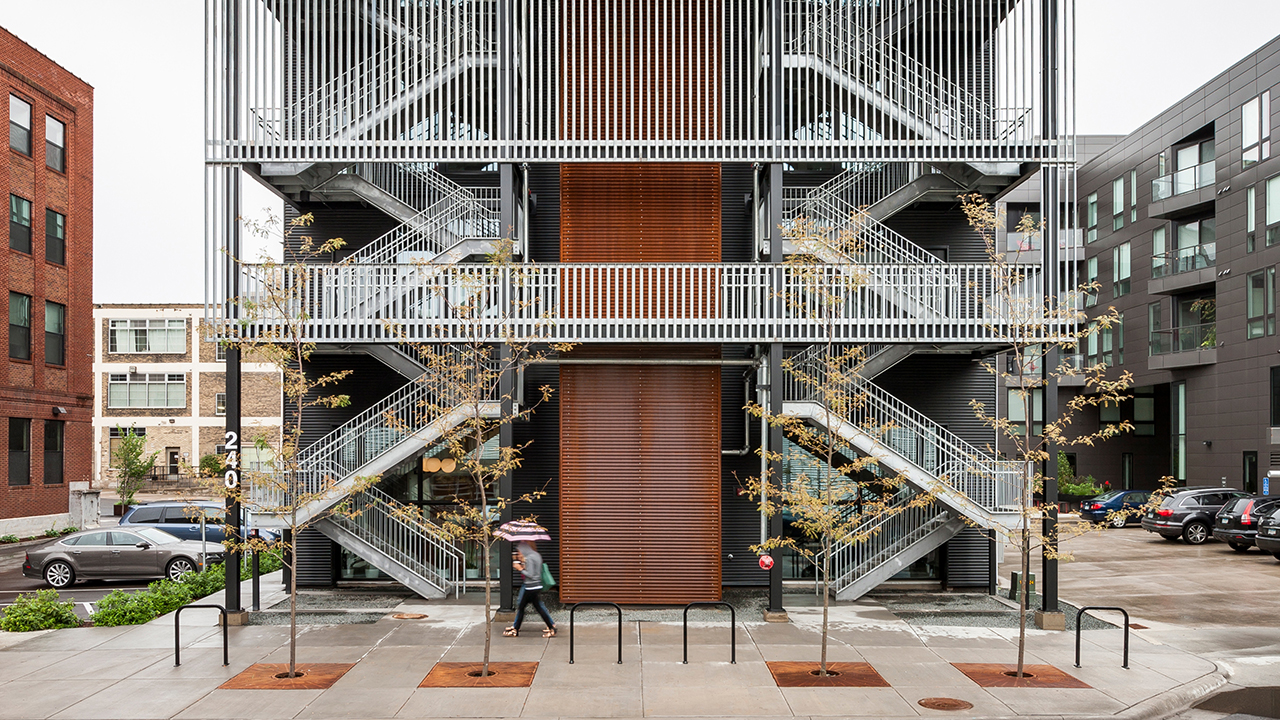It is a quietness not to be confused by timidity. Mr. Salmela’s work is clean and bold, encompassing the nuance of history, the natural world, and imagining outside the traditional box. There is a strength in design and character which simultaneously holds history with modernism in a way that is genuine to the natural world, the human experience, and the landscape we live in.
Images by Paul Crosby and David Salmela
Gatherhaus is fascinated with the people behind the projects that intrigue us. We hunt for ideas that resonate with our intuition for art, purpose, and simplicity in living. When we find it, we do everything we can to sit with the person behind the craft.
After trying for years to connect with local Duluth architect David Salmela (our schedules never quite lined up), Kat and I found ourselves with our six kids headed up to the North shore for a handful of interviews when we had a serendipitous afternoon where we got to cross paths.
I learned about Mr. Salmela’s work when Kat drove us out to his project along the St. Croix, Jackson Meadow a few years ago. With Scandinavian influence and an emphasis on homes surrounded by and blending into nature, it was haunting and peaceful. We entered space that had been touched by purpose, heart, and genuine care for the landscape and the people who would dwell there. Nothing was by accident. The homes were designed with intent. Materials chosen with integrity. The natural world not diminished by the invasion of homes but instead rose to the focal point, celebrated and honored. It was a cohesive blending of the earth and humanity. The buildings erected by men weren’t demanding a sacrifice from the earth they lived with. This harmony is what Salmela Designs does best.
I am used to being in spaces and structures that are practical for cost purposes. Spacial design is laid out and materials purchased for cost effectiveness. Profit. Gain. Convenience. Express. Thought is not generally given to the life that will inhibit the space after the contract is signed. Individuality of the inhabitant is not a common contributing factor for mass produced dwellings.
So when I walked into Mr. Salmela’s home and office I was immediately aware of the dramatic difference of his work. I was standing in his art where every fiber and morsel of that space held meaning. Nothing was frivolously placed. I sensed that the very number of stairs had reasoning. The size and width and color of the fire pit held a story. Why are the windows the size they are? The bookshelves placed where they were? I was intrigued by the angle and color of the chairs. Standing in such directed design, my mind was starved for the knowledge and stories that such intentional care brought forth.
Mr. Salmela greeted Kat and I with warmth and affection, bringing us all the way into his sanctuary while his lovely wife chopped fruit for dinner. He was open with his ideas and inspirations, being patient as we asked dozens of what I am confident were ridiculous questions. What I was told would be a thirty minute interview in his office, turned into an almost seventy five minute tour of his home and office and the immediate surrounding area. He had our rapt attention as he described how to work from process and intuition outside of expected standards. He was genuinely excited for us to test out his furniture designs, to soak in the interiors, to experience the outdoors from each landing.
Spending even this small amount of time with Mr. Salmela grew my appreciation and understanding of how living more harmoniously with the natural world could be achieved. He spoke of the importance of entering a space. That there should be a defining process for the entrance, a method of arriving. We discussed how very few buildings in Duluth are orientated toward Lake Superior, which stands in contrast to his focus of the great lake.
“I’ve lived in Minnesota all my life. I’ve traveled, but the circumstances were never to leave,” says Salmela, who is 72. His studio and residence look out over Lake Superior, and he credits the landscape of the Canadian Shield as a major influence on his work. “Certainly I would have had a choice to go probably anywhere, I guess, but I like the climate and the terrain where we live here. It’s a rugged land. It’s close to the wilderness.” – Kriston Capps (Architect Magazine)
Salmela spoke of the importance of how design should always be in relationship to art, the view, people and scale. I found great value with his priority that every home should have three outdoor seating areas to accommodate the sun and the elements. It is the need to be connected to the natural world and having that availability in all types of circumstances.
It was intriguing to hear the difference of what is important in making design decisions. To focus on the Iron Range Resources, capitalizing on the natural setting. Designing interiors that are proportional to the light you receive from outside. A physical form that celebrates where culture, modernism and Minnesota all come together. To learn how scale is critical, designing full space yet small that is capable of honoring the person, the resources and the space. Heritage and new traditions blend as old ideas are made modern while also seeing how the building lives with harmony to the world it will sit in.
Harmony. Tranquil. Integrity. Minimal. Content. Honor. Peaceful.
“As he tells it, Salmela started his career as a forward-thinking modernist, but after a few years he started to question why the public failed to embrace the modern agenda. He took a harder look at the old buildings of his region and studied the architectural traditions of Scandinavia.” – AIA California Council
Salmela is a Minnesota Modern Master of the MN chapter of the Society of Architectural Historians. (MNSAH) His intentionality and instincts when it comes to the mystery that lives in his designs and creations is a great benefit to those of who live in upper midwest. He is a Minnesota treasure that we can be inspired by and learn from.
Mr. Salmela it was a great pleasure and honor to spend an afternoon with you. Your ideas were infectious and your energy contagious. I left feeling like I was leaving an old friend your welcome was so warm. We want to extend a heartfelt thank you for all the time and attention you gave us.
To learn more about David Salmela and the work he does, visit his website at www.salmelaarchitect.com.
You can also enjoy a piece of Mr. Salmela’s work in the form of furniture at a local Duluth company Loll Designs. Please go now and check it out! It’s stunning, clean and unexpectedly comfortable.
Live in Minneapolis and want to see his work? Go grab an ice cream at Izzy’s down on the Mississippi by the Guthrie, or walk past the Fast Horse Building.
You can also check out the Bagley Outdoor Classroom at the U of M building in Duluth.
